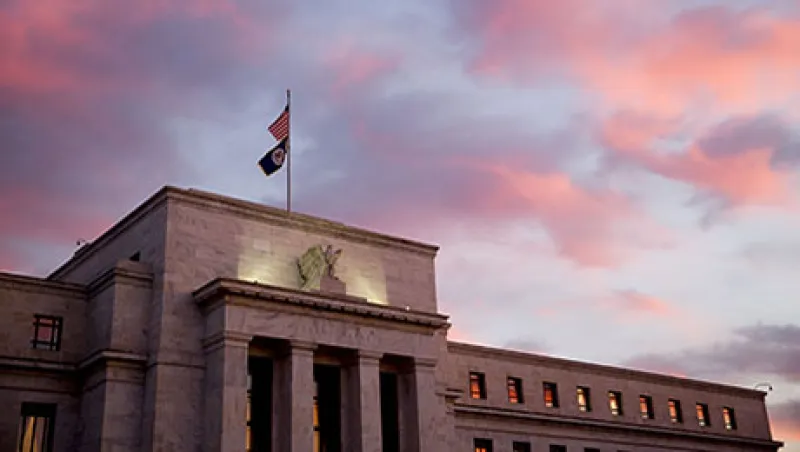In the Federal Open Market Committee (FOMC)'s December policy statement this afternoon, Federal Reserve chair Janet Yellen announced that the Fed is waiting to raise interest rates, and the "considerable time" wording has been removed from official policy. The Fed still plans to raise short-term interest rates in 2015, but is exercising prudence exactly as to when.
"The committee judges that it can be patient in beginning to normalize the stance of monetary policy," said the FOMC in its monthly announcement.
November’s employment report showed unusually strong gains in the number of jobs created, as well as signs that wage growth might be awakening. These data are particularly noteworthy for the FOMC because many consider wage inflation to be a catalyst for price inflation.
Financial markets will continue to increase short rates long before the FOMC. Consistent with our call in September, the short end of the curve has been buoyed by expectations for a rate hike at some point in 2015. The one-year T-bill rate, for example, hit a three-year high last week. Also, the Federal Reserve continues to raise the rate it pays on reverse repo operations, which now stands at 10 basis points. This has implications for the effective fed funds rate, which firmed to 12 basis points, its highest level in 18 months.
Volatility will continue to elevate toward historical norms. Turning points in monetary policy are notoriously difficult for policymakers to navigate and even harder for markets to predict. One thing we do know, however, is that with quantitative easing concluded and the FOMC poised to soften its commitment to keeping rates ultra-low, the volatility-dampening effect of these extraordinary policies has been greatly reduced. Financial markets got a taste of this in October, and look for volatility to continue grinding higher off this year’s historical lows.
No interest rate hike until late 2015. Given the strong employment environment and emergent wage growth, market expectations have swung back to rate liftoff in mid-2015. Despite the potential for upbeat economic assessments by the FOMC in the December statement and "hawkish" knee-jerk interpretations by some pundits, we stand by our view that there will no be interest rate increases before the fourth quarter of 2015. This view is based on three factors:
First, economic growth will soften in 2015. The gasoline-fueled boost to consumption that is widely anticipated will materialize but will be short-lived. Consumption growth will follow into early 2015 but will abate soon after. The downside of very low energy prices is a reduction in capital expenditures in the energy complex that will start to be felt in the second quarter of 2015 and really kick in by the second half of 2015.
Second, FOMC members are acutely aware of the asymmetry of risk around the timing of rate hikes. The costs of raising rates too soon — that is, smothering organic, sustainable economic growth — are considerably higher than raising rates too late — that is, stoking inflation that runs above the Fed’s target for some time. Given this view, it makes sense that the FOMC is being very "patient" about raising interest rates, especially in the absence of rampant inflation.
Third, price inflation in the U.S. will continue to languish below the Fed’s 2 percent target. The appreciation of the dollar, as well as the net decline in energy and commodity prices, will mitigate any nascent inflationary pressures from wage growth. Furthermore, deflation in Europe and Japan will serve as an ongoing drag on U.S. inflation.
Shehriyar Antia is the founder and lead strategist at Macro Insight Group, an investment strategy firm based in New York. Previously, he worked on quantitative easing programs and monetary policy as a senior market analyst at the Federal Reserve Bank of New York.
Get more on macro.






